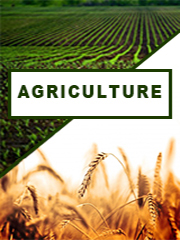Report overview
Pyrasulfotole is a pyrazole pesticide that is 1,3-dimethylpyrazol-5-ol in thich the hydrogen at position 4 has been replaced by a 2-(methylsulfonyl)-4-(trifluoromethyl)benzoyl group. A 4-hydroxyphenylpyruvate dioxygenase inhibitor, it is used as a herbicide (particularly in conjunction with the safener mefenpyr-diethyl) to control various broad-leaved weeds. It has a role as a herbicide, a carotenoid biosynthesis inhibitor, an EC 1.13.11.27 (4-hydroxyphenylpyruvate dioxygenase) inhibitor and an agrochemical. It is a pyrazole pesticide, an aromatic ketone, a sulfone and a member of (trifluoromethyl)benzenes.
This report aims to provide a comprehensive presentation of the global market for Pyrasulfotole, with both quantitative and qualitative analysis, to help readers develop business/growth strategies, assess the market competitive situation, analyze their position in the current marketplace, and make informed business decisions regarding Pyrasulfotole. This report contains market size and forecasts of Pyrasulfotole in global, including the following market information:
Global Pyrasulfotole Market Revenue, 2018-2023, 2024-2029, ($ millions)
Global Pyrasulfotole Market Sales, 2018-2023, 2024-2029, (MT)
Global top five Pyrasulfotole companies in 2022 (%)
The global Pyrasulfotole market was valued at US$ million in 2022 and is projected to reach US$ million by 2029, at a CAGR of % during the forecast period. The influence of COVID-19 and the Russia-Ukraine War were considered while estimating market sizes.
USA major companies profiled in the Pyrasulfotole market include Bayer CropScience.
In terms of product, there are several categories as follows, namely 2.70% Pyrasulfotole, 2.82% Pyrasulfotole, etc. And based on application, the largest application is Wheat, followed by Barely and so on.
We surveyed the Pyrasulfotole manufacturers, suppliers, distributors and industry experts on this industry, involving the sales, revenue, demand, price change, product type, recent development and plan, industry trends, drivers, challenges, obstacles, and potential risks.
Total Market by Segment:
Global Pyrasulfotole Market, by Type, 2018-2023, 2024-2029 ($ Millions) & (MT)
Global Pyrasulfotole Market Segment Percentages, by Type, 2022 (%)
2.70% Pyrasulfotole
2.82% Pyrasulfotole
2.28% Pyrasulfotole
1.94% Pyrasulfotole
Global Pyrasulfotole Market, by Application, 2018-2023, 2024-2029 ($ Millions) & (MT)
Global Pyrasulfotole Market Segment Percentages, by Application, 2022 (%)
Wheat
Barely
Grain Sorghum
Others
Global Pyrasulfotole Market, By Region and Country, 2018-2023, 2024-2029 ($ Millions) & (MT)
Global Pyrasulfotole Market Segment Percentages, By Region and Country, 2022 (%)
North America
US
Canada
Mexico
Europe
Germany
France
U.K.
Italy
Russia
Nordic Countries
Benelux
Rest of Europe
Asia
China
Japan
South Korea
Southeast Asia
India
Rest of Asia
South America
Brazil
Argentina
Rest of South America
Middle East & Africa
Turkey
Israel
Saudi Arabia
UAE
Rest of Middle East & Africa
Competitor Analysis
The report also provides analysis of leading market participants including:
Key companies Pyrasulfotole revenues in global market, 2018-2023 (Estimated), ($ millions)
Key companies Pyrasulfotole revenues share in global market, 2022 (%)
Key companies Pyrasulfotole sales in global market, 2018-2023 (Estimated), (MT)
Key companies Pyrasulfotole sales share in global market, 2022 (%)
Further, the report presents profiles of competitors in the market, key players include:
Bayer CropScience
Outline of Major Chapters:
Chapter 1: Introduces the definition of Pyrasulfotole, market overview.
Chapter 2: Global Pyrasulfotole market size in revenue and volume.
Chapter 3: Detailed analysis of Pyrasulfotole manufacturers competitive landscape, price, sales and revenue market share, latest development plan, merger, and acquisition information, etc.
Chapter 4: Provides the analysis of various market segments by type, covering the market size and development potential of each market segment, to help readers find the blue ocean market in different market segments.
Chapter 5: Provides the analysis of various market segments by application, covering the market size and development potential of each market segment, to help readers find the blue ocean market in different downstream markets.
Chapter 6: Sales of Pyrasulfotole in regional level and country level. It provides a quantitative analysis of the market size and development potential of each region and its main countries and introduces the market development, future development prospects, market space of each country in the world.
Chapter 7: Provides profiles of key players, introducing the basic situation of the main companies in the market in detail, including product sales, revenue, price, gross margin, product introduction, recent development, etc.
Chapter 8: Global Pyrasulfotole capacity by region & country.
Chapter 9: Introduces the market dynamics, latest developments of the market, the driving factors and restrictive factors of the market, the challenges and risks faced by manufacturers in the industry, and the analysis of relevant policies in the industry.
Chapter 10: Analysis of industrial chain, including the upstream and downstream of the industry.
Chapter 11: The main points and conclusions of the report.
